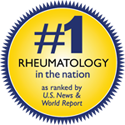Early symptoms with psoriatic arthritis are important. People will complain of pain and swelling in their joints – hands, feet, wrists, etc. They may have a small patch of psoriasis or have psoriasis covering many areas of the body. There may be complaints of stiffness and fatigue. For example, studies in Toronto showed the year before they were diagnosed, people had reported joint pain, fatigue, and stiffness. Early in the disease, people will often have episodes of worsening of the psoriatic arthritis and then episodes of improvement.
Age
Age 30 to 40 years is the peak where people develop psoriatic arthritis, which is about a decade later than the peak age for psoriasis. It usually takes 10 to 20 years to develop psoriatic arthritis in those with psoriasis, but there are certainly exceptions to this rule as well. About 7.5 million Americans have Psoriasis and up to a third may have psoriatic arthritis. It is equally common in both men and women.
About Psoriasis
Psoriasis is a relatively common skin disease. It affects about 2-4% of Americans. The area of skin that is most associated with psoriatic arthritis is psoriasis that is located on the scalp, behind or inside the ear or around the anus.
- Plaque psoriasis – The most classic form is plaque psoriasis, where people will develop raised lesions. This is often seen on the knees and elbows and can be quite bothersome.
- Guttate psoriasis – Guttate psoriasis looks like a rash in the shape of drops of rain. It spreads over almost the entire body, so if you add these patches together, it’s a lot. Patches are flat and pink to dark red and are covered with very fine scale if any. People tend to get this form of psoriasis more often after strep throat. It’s most common in young people.
- Inverse psoriasis – This form of psoriasis affects moist skin such as areas under the breast, in the groin and under arms. It tends to look different and it can be very uncomfortable.
- Pustular psoriasis– About two to four percent of people with psoriasis will have this type of psoriasis. It looks like little pimples on the hands or on the soles of the feet. These are itchy and tender and the skin may become dry and flaky.
- Erythroderma – This is rare but severe and most of the skin is affected with red, warm, sometimes painful rash. This type of psoriasis may require hospitalization and treatment with medications to rapidly get the skin inflammation under control. This form of psoriasis can be life-threatening.
- Nail psoriasis – Nail psoriasis can look in many ways. The most common form is nail pitting. Psoriasis nail pits are small dents on the surface of the nail. This can range from just a few pits on several nails to the entire nail surface being changed. The extreme form of pitting would be nail plate crumbling. Another form is what we call onycholysis, when the nail lifts off the nail bed. The nails grow slowly, so even with treatment, it takes months for the nail to fully recover.
About Enthesitis
Tendons are the bands of tissue that attach your muscles to your bones. Ligaments are bands of tissue that connect bones to bones. The places where the tendons and ligaments connect to your bones are called entheses. In psoriatic arthritis, these areas can become inflamed and painful. This is called enthesitis. For example, when the Achilles tendon or plantar fascia become inflamed, you can have a great deal of heel pain and it may be difficult to walk.
About Dactylitis
Dactylitis is the swelling of the entire finger or toe. This is also called a sausage digit. People with psoriatic arthritis may have one or more sausage digits if their disease is not under control. These fingers or toes can be quite painful. Dactylitis is a sign of severe psoriatic arthritis as it tends to be associated with permanent damage to the joints of the affected digit if left untreated.

